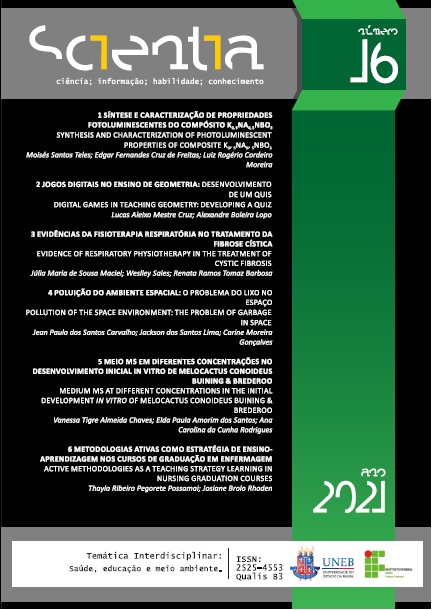POLUIÇÃO DO AMBIENTE ESPACIAL: O PROBLEMA DO LIXO NO ESPAÇO
Abstract
One of the impacts of space exploration is the fact that in orbit of the Earth are located non-functional objects of different sizes. These objects are known as space junk or space debris. Space junk is all artificial objects, including fragments and their elements, in orbit of the Earth or re-entering the atmosphere, which are not functional. The space junk causes pollution of the space environment and brings risks to space exploration, in addition, can cause major damage to human lives. This debris can cause damage to active satellites in Earth orbit, and when they return to the planet, those who survive re-entry, can cause damage as a result of the fall of fragments in residential or industrial areas. Thus, in view of this problem, we were motivated to analyze how the scientific community is working in the search for solutions to alleviate this situation. The basic objective of this work is to discuss the theme of the space junk, contextualizing the impacts that these objects cause in society and the dangers that space exploration is subject because of the space debris, in addition to presenting some technologies that are being proposed to contribute with the solution to this problem. A comparison of the evolution of the debris during the years 2016, 2017, 2018 and 2019 is presented based on the reports of the European Space Agency (ESA).
Downloads
Downloads
Published
How to Cite
Issue
Section
License
A partir da submissão entende-se como automática a cessão dos direitos autorais para a Revista, uma vez tendo sido aprovado e aceito para publicação.
From the submission is understood as automatic the assignment of copyrights to the Journal, once it has been approved and accepted for publication.





